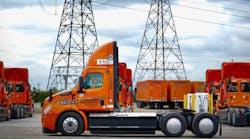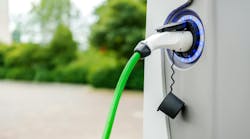However, moving from one or two trucks to 15 or more brings with it some challenges mostly surrounding the charging of those vehicles. Most fleet depots do not have enough electric capacity on site to charge large numbers of EVs, and therefore they will need to have charging infrastructure added to their site if they want to have large deployments of EVs.
Doing so will require collaboration with local utilities and that collaboration needs to begin well before the first EV is ordered by the fleet. Typically, most fleets have very little contact with their local utilities and may not even know the proper person to speak with about the process of building out infrastructure for EVs. Conversely, not every utility is well-versed about the realities of the trucking industry and may not understanding their charging needs.
That is why it is important that these two industries — which have some similarities but are also different — need to spend time getting to know each other. One possible good collaboration I see is between state utility commissions and state trucking associations. The state utility commissions can educate trucking companies about their plans for build outs, can explain rate structures and things like demand charges and can review the basic process needed to build an EV infrastructure. The state trucking associations can be a great resource for utilities trying to understand the realities of operating a trucking company and the obstacles fleets face on their road to electrification.
Trucking is not a homogeneous industry. In other words, no two fleets are alike. What they haul, where they haul it, how long their routes are, and the type of equipment they have varies widely. Therefore, their electric power needs and hours available to charge their electric trucks will vary widely based on their individual operating conditions.
A good way to begin understanding the nature of the trucking industry is to follow The North American Council for Freight Efficiency’s (NACFE) Run on Less – Electric DEPOT (RoL-E DEPOT), a three-week event that is focusing on the biggest challenges to scaling the deployment of electric vehicles. The event will feature eight fleet depots with 15+ Class 3 to 8 battery electric vehicles. The transition to electric trucks is about much more than just the trucks themselves and the event is not only highlighting the vehicles but also charging, infrastructure, grid capacity, resilience, etc. One of the goals of the Run is to showcase the benefits of collaboration between fleets and utilities now and in the future.
I have had the honor of attending and/or speaking at utility industry conferences and events. This has allowed me to gain a better understanding of the varies business models utilities operate under and that like the trucking industry each utility has its own unique operating structure. Since many fleets have operations in multiple regions of the country, it can be frustrating for fleet managers to grasp that working with a utility in one part of their market is very different from working with a utility in a different part of their market.
This is where collaboration and communication can play a big role in easing frustration on both sides.
It is important for utilities to understand that the trucking industry is relationship oriented. Truck fleets know their suppliers and suppliers know a great deal about the fleet managers they work with. This extends to not only knowing about their operational challenges but also knowing about their families, recreational activities they like, etc. These relationships are deep, allow for an open exchange of information and result in creative problem solving.
Fleets and utilities need to develop these deep relationships, but that will not happen overnight. There is a need for conversations between fleets and utilities to start now so that relationships can begin to develop and the two groups can build trust in each other.
I encourage utility company executives to consider attending trucking industry events in their area to begin to get to know fleets. Events sponsored by state trucking associations are a good place to start. The American Trucking Associations has a listing of state trucking associations that can be a good resource to utilities looking or local trucking industry events to attend.
The trucking industry and the utility industry have to work together to gain a better understanding of each other because making assumptions that one trucking company is just like another or one utility is just like another can cause untold frustration. NACFE is here to help, and, in fact, we will be participating in an all-day workshop during this year’s T&D World Live where we will bring together fleets and utilities to talk about battery electric trucks. We will also have a booth at the show where we will have live updates from RoL-E DEPOT.
Dave Schaller is director of industry engagement of the North American Council for Freight Efficiency.


